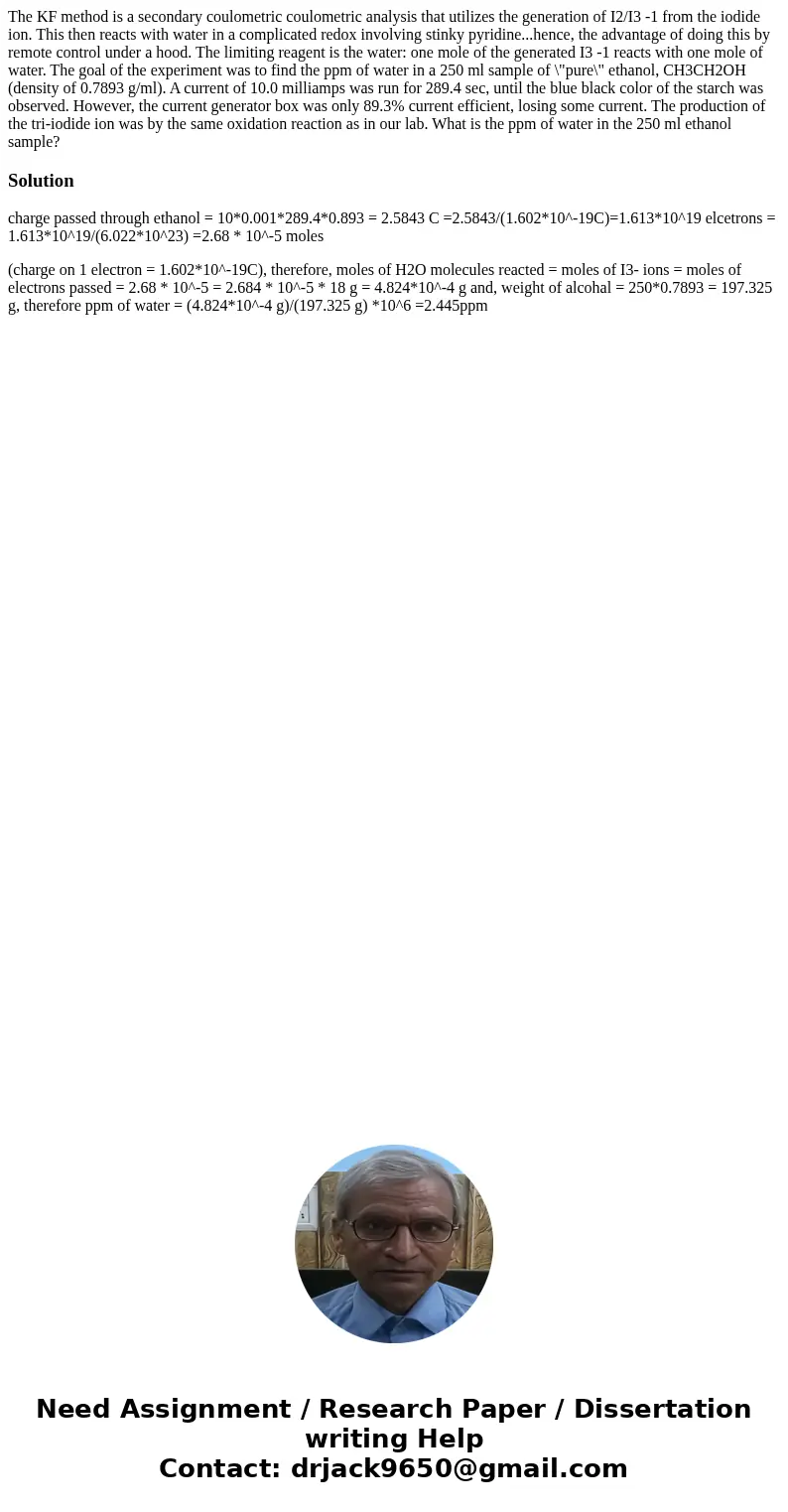The KF method is a secondary coulometric coulometric analysi
The KF method is a secondary coulometric coulometric analysis that utilizes the generation of I2/I3 -1 from the iodide ion. This then reacts with water in a complicated redox involving stinky pyridine...hence, the advantage of doing this by remote control under a hood. The limiting reagent is the water: one mole of the generated I3 -1 reacts with one mole of water. The goal of the experiment was to find the ppm of water in a 250 ml sample of \"pure\" ethanol, CH3CH2OH (density of 0.7893 g/ml). A current of 10.0 milliamps was run for 289.4 sec, until the blue black color of the starch was observed. However, the current generator box was only 89.3% current efficient, losing some current. The production of the tri-iodide ion was by the same oxidation reaction as in our lab. What is the ppm of water in the 250 ml ethanol sample?
Solution
charge passed through ethanol = 10*0.001*289.4*0.893 = 2.5843 C =2.5843/(1.602*10^-19C)=1.613*10^19 elcetrons = 1.613*10^19/(6.022*10^23) =2.68 * 10^-5 moles
(charge on 1 electron = 1.602*10^-19C), therefore, moles of H2O molecules reacted = moles of I3- ions = moles of electrons passed = 2.68 * 10^-5 = 2.684 * 10^-5 * 18 g = 4.824*10^-4 g and, weight of alcohal = 250*0.7893 = 197.325 g, therefore ppm of water = (4.824*10^-4 g)/(197.325 g) *10^6 =2.445ppm

 Homework Sourse
Homework Sourse